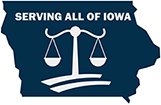Last Updated: 9/6/2023
Motorcycle Helmet Certification
Have you ever looked at your motorcycle helmet and wondered what the little abbreviation or logo is on the back? It is most likely the symbol of your helmet’s safety certification and discovering how the helmet manufacturer obtained that certification for the specific helmet you are using can provide great insight into how well it is protecting your head.
There are four main safety certifications for most helmets sold in the United States: Department of Transportation, United Nations Economic Commission for Europe, Snell Memorial Foundation, and the British Standards Institute.
We will break down each certification and what it means for each individual helmet available for sale.
Department of Transportation (DOT)
While the government does spot-check manufacturers that choose to use the DOT certification for the helmets they produce, this type of certification does not require any mandatory testing before the helmets are cleared for sale. Instead, the manufactures produce the helmets under the guidelines that the DOT has already outlined, and then they give themselves the certification.
United Nations Economic Commission for Europe (ECE)
Under this certification, helmets go through two rounds of testing before they can receive the certification. First, helmet manufacturers must submit a lot of helmets for testing. Once that batch passes testing and inspection, it must be tested again before receiving final certification approval.
Snell Memorial Foundation, or “Snell”
For each model of helmet seeking certification, six helmets are submitted to the Snell Foundation testing. Once all six of the helmets pass the test, the helmet manufacturer is allowed to buy a Snell certification for that specific helmet model. Snell is one of the few organizations that also randomly tests Snell-certified helmets by purchasing them from retailers and testing helmets that have already passed inspection one time around.
British Standards Institute (BSI)
The BSI certification application is based on the number of helmets that a manufacturer plans on selling. For every batch of helmets, they want clearance for, they must submit five helmets for testing if the quantity is 500 or less, 13 helmets when 501-1,200 are in the batch, and 20 must be helmets must be submitted for a quantity of 1,201 to 2,000. Manufacturers do not have to pay anything to obtain the certification. BSI will then release stickers proving the certification in the exact number in that batch, once approved.
Not sure which helmet certification is the best? Call us and we would be happy to put you in touch with a motorcycle helmet expert who can help you find the best protective gear for your needs. As attorneys who not only ride motorcycles but who also protect those who have been injured while riding them, Walker, Billingsley and Bair are avid participants in the motorcycle industry and would be happy to help you find answers to your safety questions. Call us Today at (641) 792-3595.


